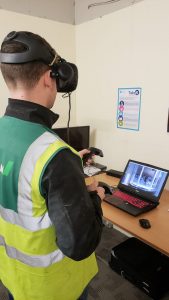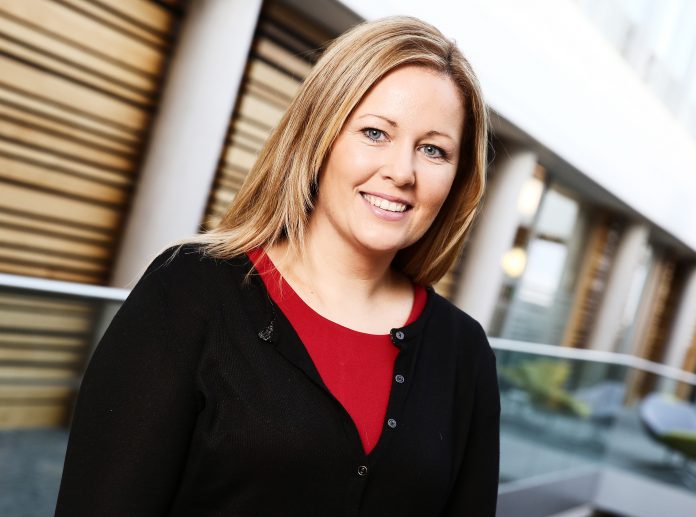Melanie Dawson, director of digital construction at GRAHAM, discusses digital construction, BIM and smart ways of working in the construction industry
Over the last five years, we have witnessed the widespread application of digital technology across the construction industry
With it, contractors and clients have enjoyed considerable benefits, ranging from increased productivity to the attraction of bright young talent to the sector.
However, in comparison with other industries, such as advanced manufacturing and the media, construction continues to play catch up.
At GRAHAM, we pride ourselves on being a “digital by default” company and, in my role as director of digital construction, I’m in a privileged position to drive the development and implementation of technologies that transform the way we plan, design, deliver and manage the built environment.
We are constantly exploring opportunities to incorporate new technologies into our workflows, with a deep-seated commitment to adding value to every project we undertake.
Collaboration is a key factor in successful project delivery. This was a consistent theme emanating from ‘Digital Construction Live 2019’, a digital construction conference hosted by BIM Regions NI in Belfast, with a range of inspirational speakers highlighting the importance of effective collaboration and information sharing.
Across every GRAHAM division, our strategy is to work together with our stakeholders while retaining controls over the proprietary information that drives project delivery.
Without collaboration, there is no progression
With the rapid emergence of new technology, the ability to stay connected with industry leaders from across the world has never been easier. My role allows me to collaborate with forward-thinking individuals who are transforming the design, engineering, construction and asset management sectors of the built environment.
Connected information is powerful, and I believe that by working together we can deliver better results more efficiently. Our “digital by default” approach helps us to connect project information from concept to design, through preconstruction all the way to handover and beyond.
Our strength is our data-driven results
Another key attribute contributing to successful project delivery, is the ability to instantly access accurate information, which positively influences workflows on site. Ultimately, given the volume of information collected, access to the right information, not too much or not too little, is more important than ever.
For example, the A6 Randalstown to Castledawson dualling scheme continues to use drone technology to capture accurate point cloud data. From this platform, stakeholders can then interrogate the information, driving collaboration and the sharing of information in the process.
Another project demonstrating exemplary connectivity is Erskine House in Belfast. Collaborating with the client, who had a digital vision from the outset, we were able to fully support project managers, designers and all other relevant stakeholders to deliver the project to BIM Level 2 requirements
 Following the successful recent handover of the city centre office development by GRAHAM (Building), our interior fit-out division took over the project reins and will bring it to a conclusion before occupation by HMRC. From an interior fit-out perspective, we continue to develop both the physical and digital asset while driving collaboration, connection and access.
Following the successful recent handover of the city centre office development by GRAHAM (Building), our interior fit-out division took over the project reins and will bring it to a conclusion before occupation by HMRC. From an interior fit-out perspective, we continue to develop both the physical and digital asset while driving collaboration, connection and access.
We believe that a connected approach allows us to deliver whole lifecycle information on each of our projects. Connecting with many different sources ensures connected data, and in turn, this provides much greater analysis and simulation of energy consumption, lighting and solar studies. True digital longevity is what we aim for.
Successful connection cannot happen without access. We provide our site teams with the equipment they need to access the information they require remotely, and this saves valuable time while streamlining workflows.
This enhanced access to information also increases quality, health and safety and helps to reduce the risk of errors on site.
Incorporating these types of technology is saving between 10-30% of time that would otherwise have been spent accessing or creating traditional “paperwork”. Enhanced access makes a real difference, and as a result of this understanding, all new GRAHAM projects are automatically set up digitally, helping build strong working relationships along the way.
How we collaborate, connect and assess information is constantly evolving, and in my opinion, artificial intelligence will drastically change the way we work – and it will happen imminently.
Furthermore, I believe, speech recognition will play a major role, especially in how we connect and assess information. We already have Alexa, Siri and Google all within our homes, and the next step is to introduce this type of technology across construction projects.
Culture eats strategy for breakfast, the successful implementation of the digital tools we use at GRAHAM is down to the people. At GRAHAM, we believe in our people who in turn believe in our digital by default ethos.
It’s so exciting to be part of such an ambitious, rewarding movement. All of us, collectively, are changing the construction industry for the better, and GRAHAM is determined to remain at the forefront of this transformation.
Melanie Dawson
Director of digital construction
Twitter: @GRAHAM_Digital














